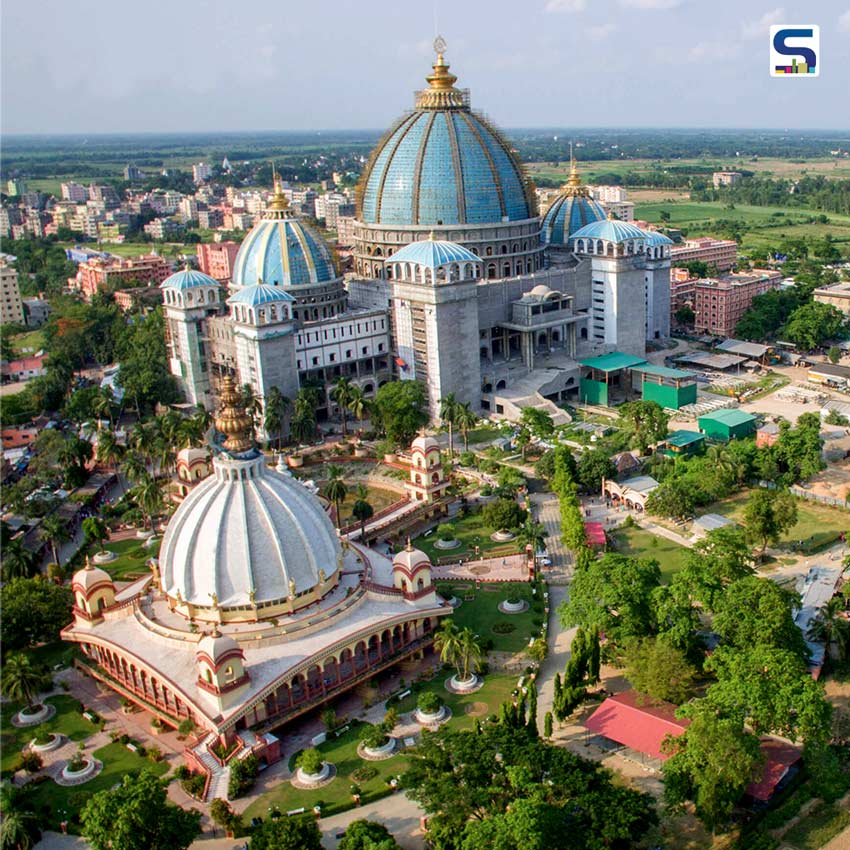
With a height of 350-feet and an area measuring more than 5 lakh sqft, the temple of Vedic Planetarium is going to be the world’s largest Iskcon Temple. Designed by The International Society of Krishna Consciousness (ISKCON), the temple will not only be the largest in the world but it will feature the second largest dome after St.Peter's Basilica, 108m tall. The construction work of the temple, which is located in Mayapur, West Bengal, is slated to be completed in 2024. Know more architectural details about this magnificent temple shared by the ISKCON's Temple of Vedic Planetarium (TOVP) Architecture Department with SURFACES REPORTER (SR). Scroll down to read:
Also Read: This Marvel Temple in Iran Elegantly Embraces The Lush Green Nature | Arash Kashkooli
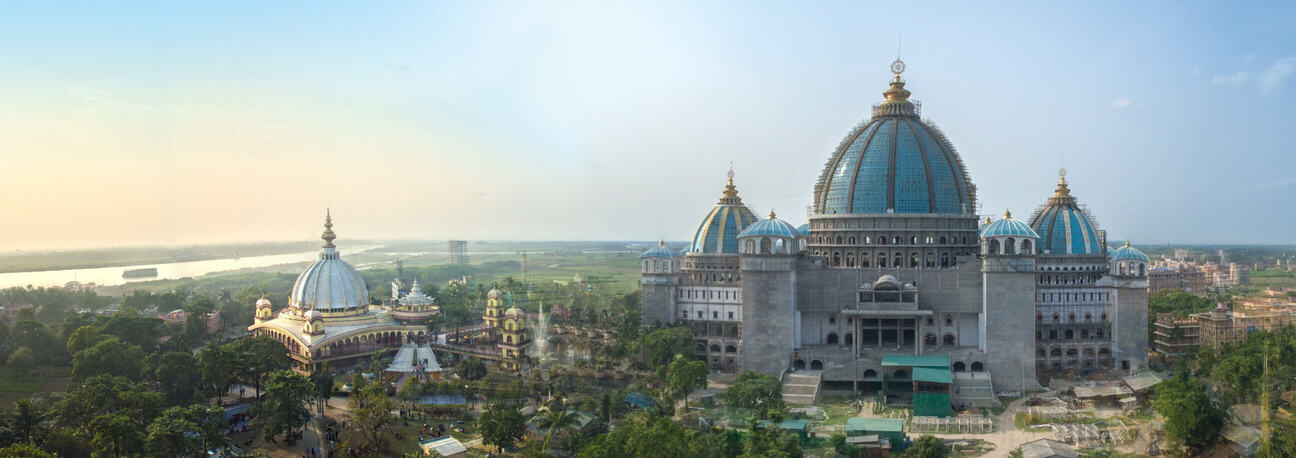 The temple is situated in Mayapur in Nadia district of West Bengal, which is the headquarters of the International Society of Krishna Consciousness (ISKCON). The construction of this massive temple, which is embellished with huge chandeliers and giant idols, started in the year 2010 and over two crore kgs of cement have gone into its colossal structure. A whopping amount of Rs. 500 crores have been invested in the construction of the temple.
The temple is situated in Mayapur in Nadia district of West Bengal, which is the headquarters of the International Society of Krishna Consciousness (ISKCON). The construction of this massive temple, which is embellished with huge chandeliers and giant idols, started in the year 2010 and over two crore kgs of cement have gone into its colossal structure. A whopping amount of Rs. 500 crores have been invested in the construction of the temple.
Main Motive Behind The Building of This Temple
Acharya Prabhupada envisioned building a structure to spread Vedic culture and knowledge all over the world through a materialized scientific and authoritative platform on the lines of Vedic knowledge. As per The Temple of the Vedic Planetarium, “Einstein often said, where science ends, spirituality begins.
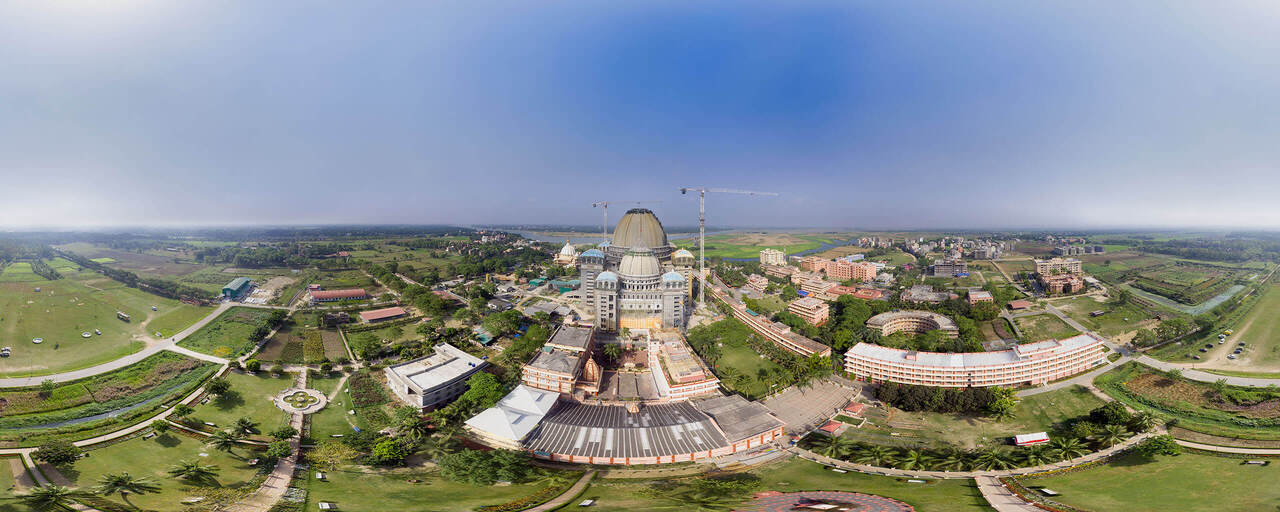
The Temple of the Vedic Planetarium as its name suggests is a meeting point where scientists and spiritualists are facilitated in one space. This cosmos and creation will be depicted through models of the universe, a dome theater, research libraries, sacred spaces of meditation, and a lot more.”
Design Philosophy
Rising from the plains of the holy land of Sri Mayapur, West Bengal on the banks of the famous Ganges River, the Temple of the Vedic Planetarium is designed to be a life-changer to visitors for the experience it facilitates as a physical space. It is being designed according to the hermeneutics of sacred architecture which is developed through specific research methods. The end product of the research was a theoretical framework of sacred spaces wherein physical spaces become facilitators of spiritual practices for millions of people throughout the ages.
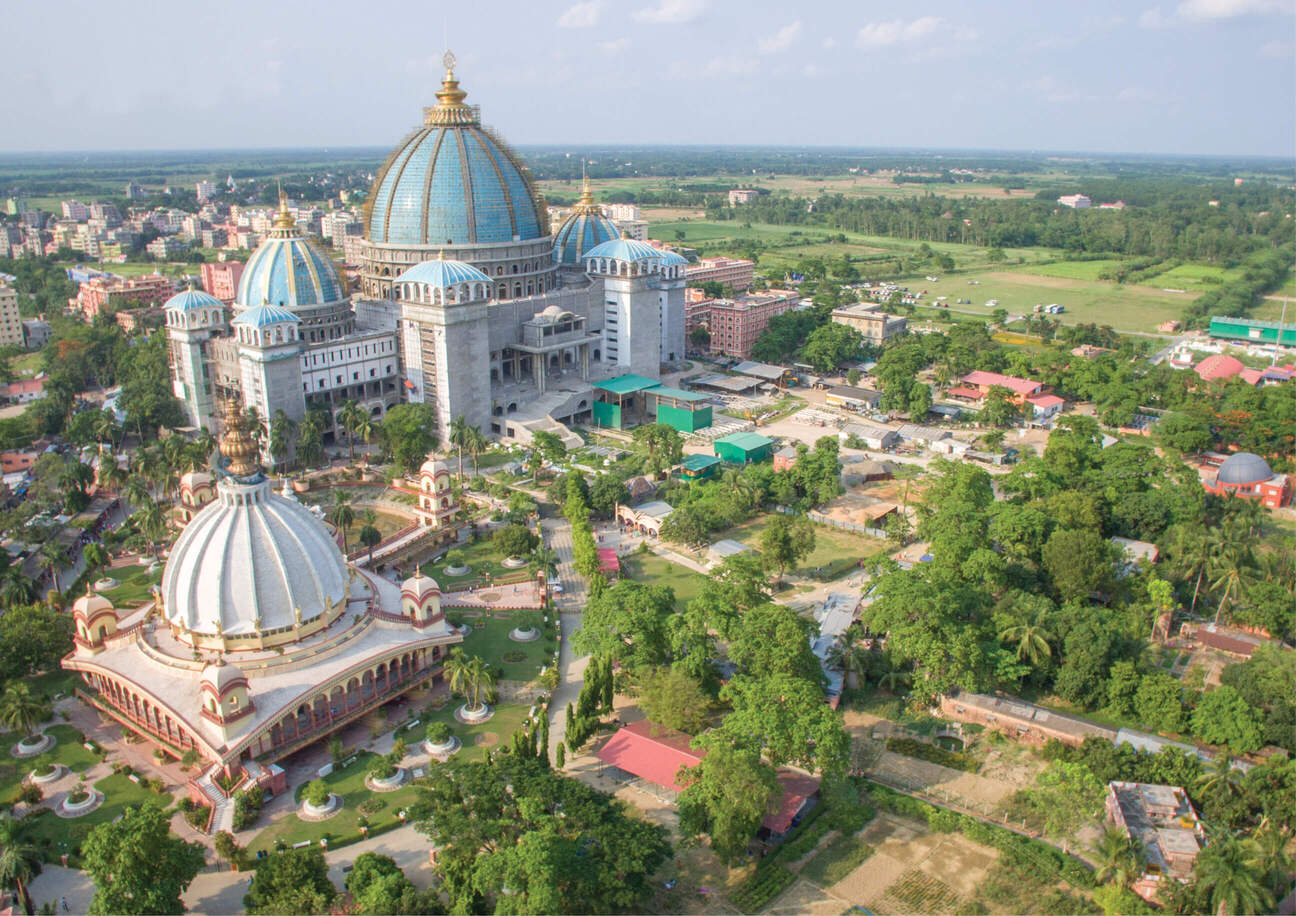
The building is designed and constructed based upon the theory of Architecture which suggests that the basics begin at the fundamental space cells called 'Morphemes'; clustering together to form an Ensemble and eventually arranged in certain ways to create the final 'experience'. And this experience becomes the limen/threshold in the lives of the visitors who visit this building.
What Makes The Temple Unique
The temple is the alluring amalgamation of the East and the West. The marble used in the temple is obtained locally as well as imported from Vietnam. The uniqueness of this temple lies in its 2.5 acres wide Pujari floor and the temple floor that spans 60 m in diameter.
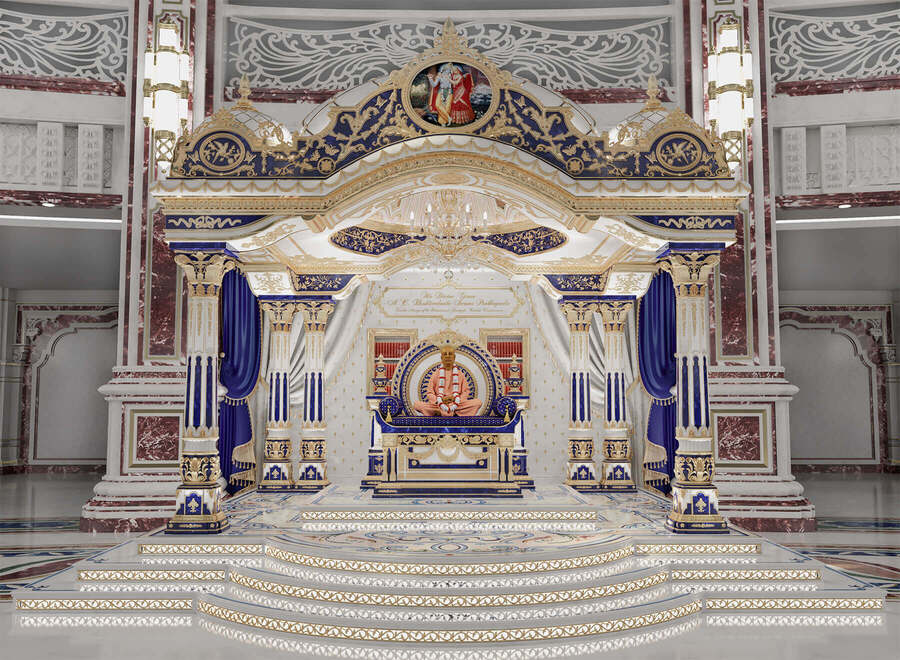
Further, to give a special look to the shrines of the deities, the architecture team of ISKCON is also building 20 m long Vedic Chandeliers. Moreover, it will feature the use of advanced technology to broadcast puja sessions online.
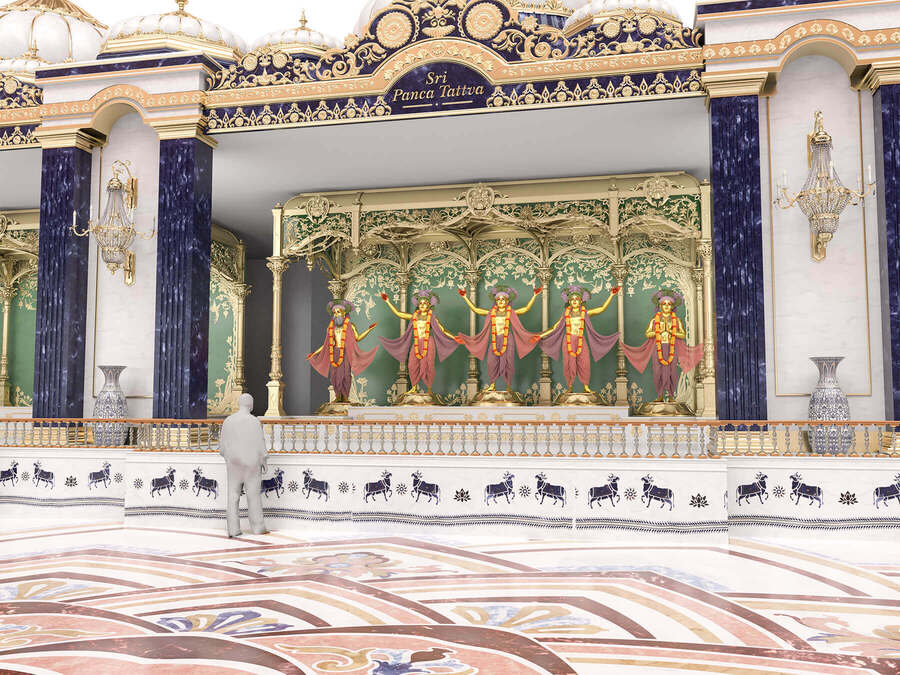
As per the design team, the temple can accommodate 10,000 devotees on each of its floors who can sing, pray and even dance in front of Lord Krishna as it is the general tradition of the ISKCON temple.
Also Read: Hare Krishna Cultural Center By Tushar Sogani Is An Epitome of Modern Interpretation of Vedic Temple Planning | Jaipur
Main Highlights of the Temple
The main highlights of the temple include a cosmic chandelier, a Vedic science center and a planetarium wing.
Cosmic Chandelier
The temple gets its name because of the cosmic chandelier that is placed on the main dome of the temple. Srila Prabhupada, the Founder/Acharya of ISKCON, desired to establish a cosmic chandelier in Mayapur, which is a 3-dimensional, moving model of the universe as described in the Vedic Scriptures.
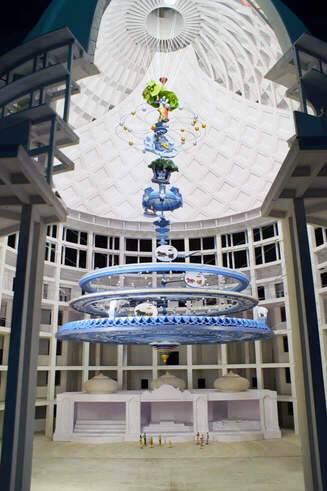
He directed that the model should be based on the descriptions given in Srimad Bhagavatam and other Puranas, as well as the Brahma Samhita. The temple authorities explain that the “planetary systems and all the universal contents to be in the shape of an incredible chandelier, and sometimes as an inverted tree with its roots going up and branches down.”
Vedic Science Center
Temple of Vedic Planetarium (TOVP) also comprises an array of exhibits showcasing the different interesting aspects of the Vedic sciences, and how they are relevant to all aspects of human civilization. Major exhibits contain a Vedic library and research center, more detailed expositions of Vedic Cosmology, the scientific theory behind the chandelier planetary model, Vedic social science and social organization, Drutakarma Prabhu's work documented in his book "Forbidden Archeology" and also the sacred archeology of the Vedic age.
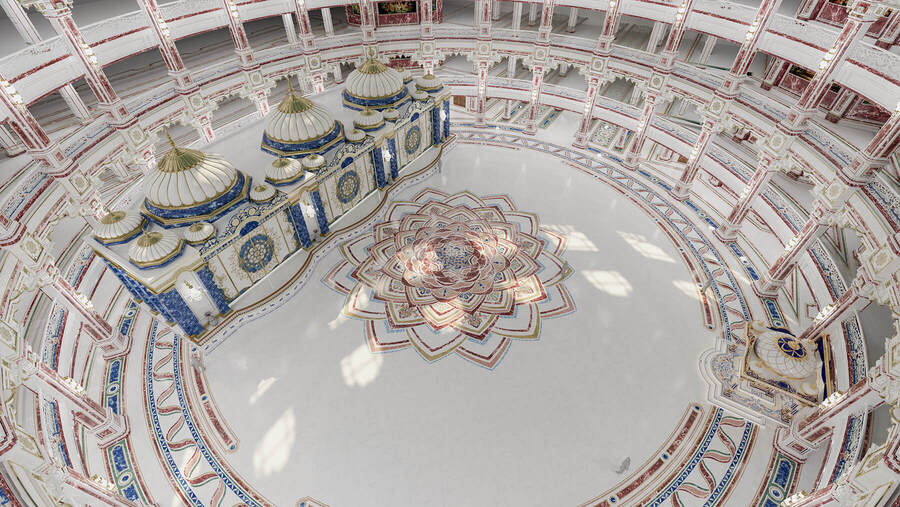
It also contains information centers that provide details about the misconception of Aryan Invasion theory, solid scientific fundamental principle underpinning concepts of Intelligent design
Planetarium wing
Three domes form The Temple of the Vedic Planetarium. The Main center dome (also the largest) houses the Vedic Cosmic Chandelier as well as the largest Vedic altar in the world. The West Wing dome houses the temple of Lord Nrsimhadeva, the half-lion, a half-man avatar of Vishnu, and the East Wing dome is the dedicated Planetarium Wing.
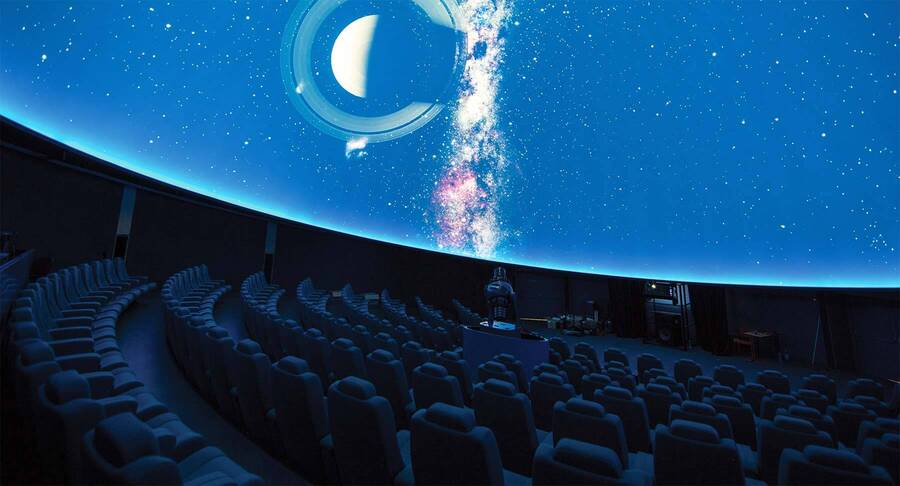
Within the Planetarium Wing's four floors will be various cosmology exhibits, video monitors, maps and charts, and other displays to explain in more detail the Cosmic Chandelier and Vedic Cosmology in general. However, the highlight of the planetarium will be the state-of-the-art theater where viewers can have a simultaneously entertaining and educational experience of this complicated subject. The large advanced digital projectors will be used to project an image onto a domed planetarium screen. The Planetarium Theater can accommodate 200 people, and the ceiling will have a 20m hemispherical dome. The theater can also double as a general-purpose theater and lecture hall for conventions, meetings and presentations.
Also Read: ISKCON going green; to develop all its temples across the world as the ‘Green Places of Worship’
Construction Methods
The temple is lined with Blue Bolivian Marble, which is imported from Vietnam and also depicts the use of marble procured from India. Hence, it showcases the striking mix of western and Indian products. Further, the impressive shrines of deities are decorated with 20m long Vedic Chandeliers.
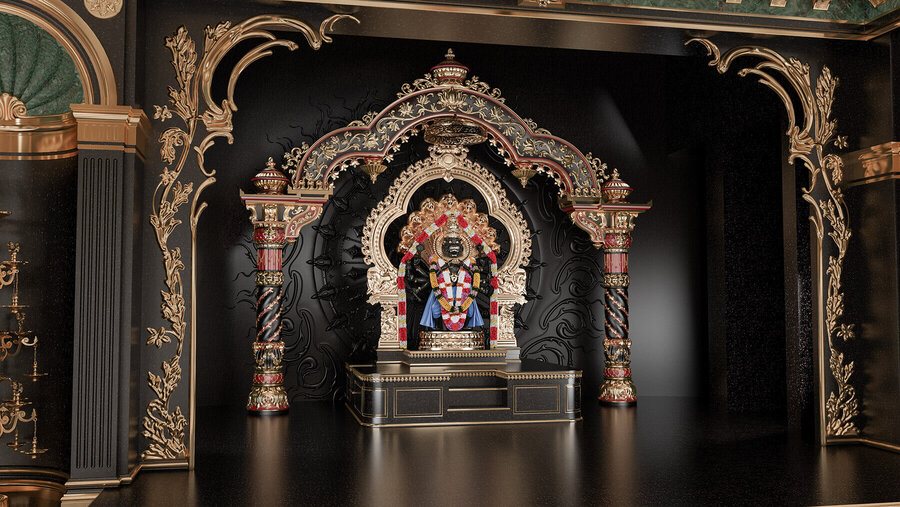
The unique choice of materials, design, scale and construction techniques involved in this project are all one of a kind, and apart from its purpose the temple also offers a lot of learning in terms of innovation in construction.
Scientific Model of the Cosmos
The centerpiece of the complex is the Vedic Planetarium which provides visitors with an enlivening tour of the various regions of the cosmic creation.
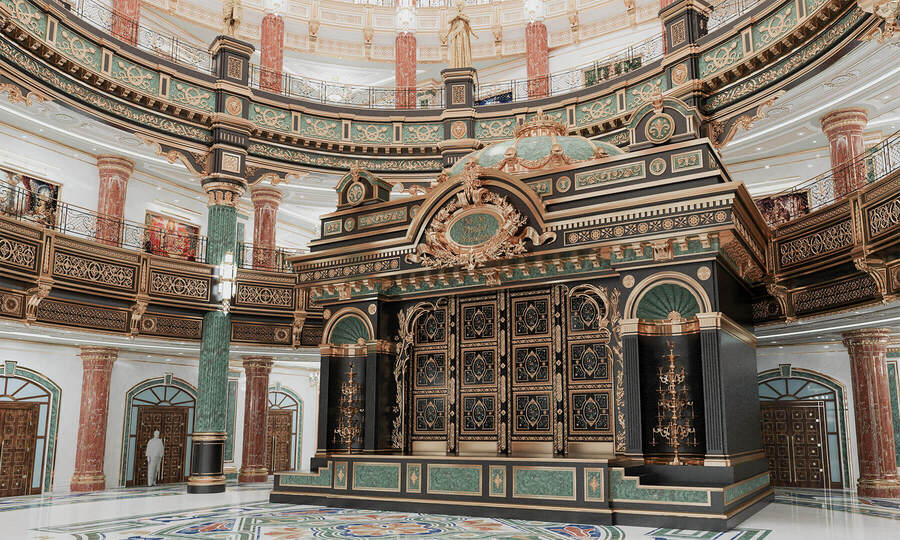
This Planetarium features a giant rotating model that demonstrates the movements of the planetary systems as described in ancient Indian texts. Explanations and displays are also presented that describe how these movements correspond to the visible universe of our experience.
Who Can Visit the Temple of Vedic Planetarium?
People of all religions, castes and creeds can visit the temple, which is dedicated to Lord Krishna. The temple which is set to open its doors in 2024 is considered to boost tourism in the city but will also drive up the economy of the region. Recently, Mayapur has been bestowed with the title of a heritage tourist site as it attracts a large number of tourists every year.
Keep reading SURFACES REPORTER for more such articles and stories.
Join us in SOCIAL MEDIA to stay updated
SR FACEBOOK | SR LINKEDIN | SR INSTAGRAM | SR YOUTUBE
Further, Subscribe to our magazine | Sign Up for the FREE Surfaces Reporter Magazine Newsletter
Also, check out Surfaces Reporter’s encouraging, exciting and educational WEBINARS here.
You may also like to read about:
What Is Special About Telanganas Ramappa Temple That Made It to UNESCOs World Heritage Site List?
The Magnificent Ranakpur Jain Temple With 1444 Unique Pillar Designs
And more…